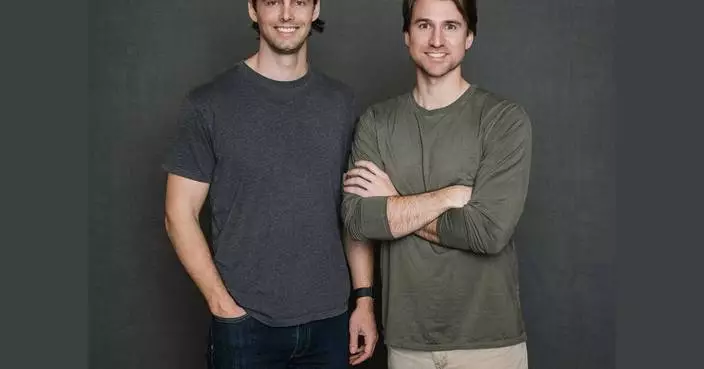NEW YORK (AP) — The moment I knew I had to get serious about work-life balance came without warning. I was writing a high-profile news story during the pandemic when my heart began pounding like a jackhammer.
I took a quick, deep breath and held it, hoping to calm the arrhythmia. It was a technique I’d learned to relieve occasional palpitations caused by my rare congenital heart defect. But this time was different. The room went dark. I couldn’t see. Then, just as quickly, my vision returned.
In the days that followed, I learned I needed to have a defibrillator surgically implanted as soon as possible. My cardiologist told me: it’s time to reduce stress. That was a prescription I, like many Americans, didn’t know how to fill, especially as the parent of a young child.
But the health scare and a cancer diagnosis that followed meant I had to try. Now, as I continue this journey, I’m launching a series called “Working Well.” While exploring ways to improve my own well-being at work, I’ll share experts' insights and tips with readers who hope to do the same.
We’ve been through a lot the past few years: A global pandemic took loved ones' lives and left parents juggling full-time jobs with no childcare. College graduates navigated their first professional jobs without lunch buddies or in-person mentors. Elections and wars divided families and places of work. It's no surprise workers feel burned-out.
But along with these challenges came a growing sense that we could choose to build our professional lives in a different, healthier way. Companies experimented with hybrid work models. Younger generations talked more proactively about mental health. Employers looking to retain workers launched in-house yoga and stress-reduction programs.
The Associated Press wants to contribute to the conversation about workplace wellness. In the coming months, we plan to interview doctors, therapists, executives and coaches about the changes they recommend or have made to improve employees’ lives — ones you may want to consider, too.
The topic is personal for me. After I received my defibrillator, I took steps to find that elusive work-life balance. I experimented with a four-day workweek. That helped me find time to exercise, cook healthy meals and occasionally pause.
Just as I was getting into a groove, a routine mammogram revealed breast cancer. There would be surgery. I was given frightening handouts and bluntly told about procedures that would make me feel like a piece of meat. There would be months of chemotherapy. Thirty rounds of radiation. My heart condition complicated every treatment plan.
With the life-threatening diagnosis also came lessons in healing. For the first time in my life, I was forced to slow down enough that I could listen to my body. When I was tired in the afternoon, instead of having chocolate or coffee, I took a nap. I timed my chemotherapy appointments so I'd be well enough to walk to the bus stop on my son’s first day of kindergarten, celebrate his birthday and walk house-to-house on Halloween.
My oncologist encouraged me to exercise through chemotherapy. I swam laps at the town pool, under the green leaves of the oak trees, swapping my wig or turban for a swim cap discreetly. I tried yin yoga. I took walks. When I felt lightheaded, I rested. When I felt stronger, I rode on my stationary bike and did crunches.
I began acupuncture. I finally tried meditation. I learned that for this disease, unlike with my heart condition, there was a raft of support networks available. Social workers contacted me at every turn.
At one point I had three therapists. One taught me a calming technique that I used on the way to my PET scan. In the car, inching through thick traffic with my husband driving, I began feeling dizzy, my fingers tingling, as I imagined the radiologist finding inoperable tumors all over my body. I remembered the therapist’s advice: Name five things you can see. Four things you can hear. Three things you can feel. Two things you can smell. One thing you can taste. I tried it. The panic subsided.
Eventually, my body healed enough that I could return to work. But I was altered. I still had brain fog and fatigue, side effects of chemotherapy and radiation. How would I perform? Was it possible to maintain my health and thrive in my career?
Coming back, I wanted to continue the wellness habits that cancer, after thrusting me off the track that had been my life, gave me the time to begin. Writing stories that help others, including this series, is a way to do that.
In Working Well, I’ll share stories about inspiring workers who have overcome challenges and actively improved their health. I’ll tackle topics from how to negotiate a new schedule to navigating the workplace with health challenges.
I want to hear your experiences as well. Have you surmounted a big obstacle at work? Adopted new habits? Found balance, or not, as a working parent? Share your stories and questions about workplace wellness at cbussewitz@ap.org. Together, let’s be well at work.

(AP Illustration/Annie Ng)










